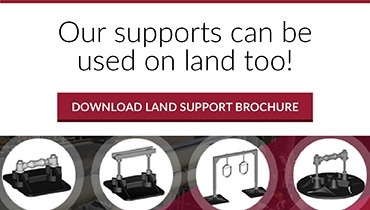Roof safety is paramount for commercial buildings. A roof collapse is the worst-case scenario for a commercial roof, and the effects are widespread. First, the roof isn’t just gone—a collapsing roof creates debris that falls into the building and does damage to the walls and floors. This might render the entire building unusable. Any business inside the building must relocate or come to a halt. Any occupants might be injured or even killed.
Second, any roof collapse means that you, the facility owner, may have failed to do your job. You will have to prove that you regularly inspected your building, and that your inspections failed to notice the warning signs of a building failure. A roof collapse means that you might be liable for both civil and criminal penalties.
Even in the best-case scenario, a roof collapse means that no one will be able to use your building until OSHA finishes an investigation, which can take weeks or months. Once the investigation wraps up, you’ll also be on the hook for repairs (who knows how much insurance will cover) which will also take time. How many of your tenants will decide to come back?
Despite the serious risks involved, over 3,000 roof collapses occur in the United States every year. Sometimes the building owner is very lucky, and no one gets hurt. Other times, roof collapses represent national tragedies. How can you ensure roof safety and prevent this type of calamity?
Inspect and Maintain Your Roof to Prevent Collapses
One would hope that it would be easy to tell when a roof is at risk of collapse. It's not great if your roof is in a bad condition, but it’s better if you can detect obvious warning signs such as multiple leaks, pooling water on the roof, visibly damaged membrane, cracks in the exterior walls, and more. If your roof is in this condition, it’s time to get everyone out of your building and call in a repair team.
Most facility managers would never let a roof get into this condition. You may only see a roof that’s visibly about to collapse like this after a building has been abandoned for several years. The real danger comes from three sources:
Hidden Damage: Let’s say that you’ve kept on top of the game throughout the years, making inspections every quarter and repairing any defects. Unfortunately, your roof collapses anyway. What went wrong?
It might be that your inspections didn’t go deep enough. You may have seen and repaired obvious signs of damage without noticing subtler signs of leaks, moisture infiltration, or weakening support members. It may also be that there were areas of your roof that were cramped or out of the way, making them harder to inspect. New technologies such as drones and thermal imaging can help you perform more detailed roof inspections.
Alternatively, you might have added a piece of equipment to the rooftop that exceeds the building’s load. The thing about this is that adding a piece of equipment like this won’t cause your rooftop to collapse all at once. It might be months or years before the heavy equipment weakens structural elements to the point where there’s visible damage—and by then it might be too late. Make sure that you don’t guesstimate—always know the structural requirements of your roof and understand whether new equipment will require reinforcement. Using equipment platforms and supports can help distribute the weight of equipment and make it easier to inspect.
Extreme Weather: The weather is getting worse. Over time, the odds are good that your commercial roof will experience a weather event that it wasn’t designed to withstand. Extreme winds could literally blow the roof right off your building, or snow could cause your building to collapse. Over time, heavy rain could expose your roof to loads it wasn’t designed for, especially if your roof doesn’t have good drainage.
Here, your best defense is to know what you’re in for. Understand how climate trends are changing the weather in your region and reinforce your roof accordingly. Add more draining if you’re in for increased rainfall and add reinforcement if increased wind or snow is in your future.
Age: Every commercial roof will eventually age past your ability to repair it. The membrane will rail in too many places to be patched, the insulation will no longer hold in heat, and the decking will begin to deteriorate. You can hold this process off, but you can’t forestall aging forever.
Your best way to determine when to replace a roof is by conducting a regular inspection and maintenance schedule. This can help you understand when accumulating flows make it more expensive to replace your roof than to repair it.
Prevent Roof Collapse with Support Systems from PHP Systems/Design
PHP Systems/Design offers custom rooftop support systems with components that work together to make it easier to inspect and maintain your roof. Within this range, we offer pipe supports, cable tray supports, equipment supports, and more that can help prevent damage and issues that can arise from keeping equipment on your roof. With our equipment, you can help your roof last longer while gaining critical intelligence about its condition. For more information, contact PHP today!



